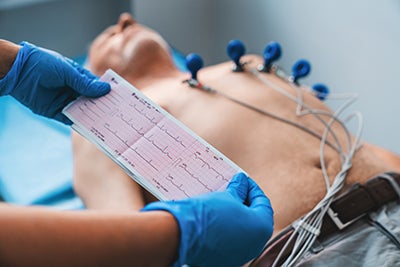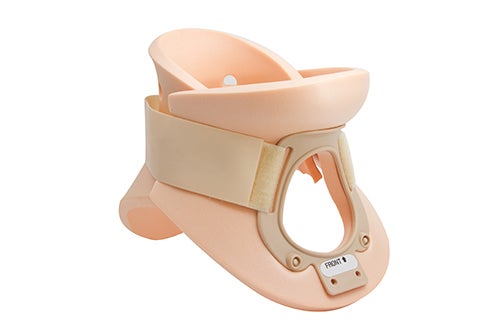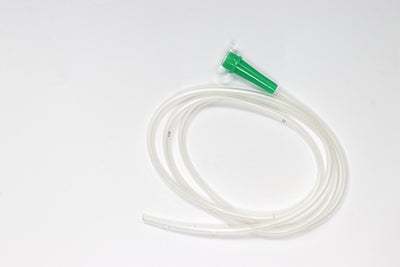Common Medical Terms & Equipment
 Types of Surgery
Types of Surgery
- Craniotomy: making an incision through of the part of the skull that encloses the brain; usually done to relieve pressure around the brain.
- Craniectomy: removing part of the skull bone to give the brain more room to swell or when a blood clot is removed. The skull bone is replaced when the patient is better (usually several months later).
- Gastrostomy: making an opening into the stomach to place a feeding tube. This is often done at the bedside but can also be done in the operating room (OR). The feeding tube is usually temporary. The doctor may remove it when the patient is able to eat food. The feeding tube is referred to as a “G-tube.”
- Jejunostomy: making an opening in the small intestine to place a feeding tube. The feeding tube is often temporary. The doctor may remove it when the patient is able to eat food. The feeding tube may be referred to as a “J-tube”
- Laparotomy: opening the abdomen so doctors can examine and treat organs – like the intestines, liver, or stomach – or blood vessels. > Laparoscopy: using small incisions (about the size of a thumbnail) and a camera to look inside the abdomen and treat many surgical conditions.
- Thoracotomy: opening the chest and allow doctors to examine and treat the lungs, diaphragm (breathing muscle), or the esophagus.
- Tracheostomy: making an incision in the throat area just above the windpipe (trachea) to insert a breathing tube. When it is complete, the breathing tube in the mouth will be taken out. This is often done at the bedside but can also be done in the OR. The tracheostomy tube may be removed when the patient can breathe on their own and can cough up secretions.
 Equipment
Equipment
- Ambu Bag: also known as a bag valve mask. It is a device used to help patients breathe.
- Blood pressure cuff: a wrap that goes around the arm or leg and is attached to the heart monitor. The cuff lightly squeezes the arm or leg to measure blood pressure.
- Central line: a special IV line placed into a shoulder or neck vein to give IV fluids and drugs.
- Cervical collar (C-collar): a hard plastic collar placed around the neck to keep it from moving if there is concern for a spine injury. If there is no injury, the doctor will remove the collar.
- Chest tube: a flexible plastic tube that is used to drain fluid or air from the chest and help expand the lung. It is placed between the ribs, usually at the bedside using numbing medication.
- Drains: tubes that help to remove fluid from collecting inside the body. These are often temporary and can be removed at the bedside.
- ECG/EKG (electrocardiogram): traces the electrical activity of the heart. The ECG gives important information about heart rhythms and heart damage.
- Endotracheal (ET)/breathing tube: a tube that is put in the patient’s mouth and down into the lungs to help with breathing. The patient cannot talk while it is in place because the tube passes through the vocal cords. When it is taken out, the patient can speak but may have a sore throat.
- Foley catheter: A tube placed in the bladder to collect urine.
- Intracranial Pressure (ICP) monitor: a tube placed in the brain to measure pressure on the brain.
- IV fluid: fluid put in a vein to give the patient drugs and nutrition.
- IV pump: A machine that gives a precise rate of fluids and/or drugs into the vein.
-
 Nasogastric (NG) tube: a tube put into the patient’s nose to give drugs and food directly into the stomach. It can also be used to get rid of excess fluids from the stomach.
Nasogastric (NG) tube: a tube put into the patient’s nose to give drugs and food directly into the stomach. It can also be used to get rid of excess fluids from the stomach.
- Orthotic: a device that keeps a part of the body from moving around. Common examples are splints or casts.
- Ostomy: a surgically created path for bodily waste to be rerouted from the intestines to a pouch or ostomy bag. The opening itself is called a “stoma” and is usually located on the abdomen. Ostomies can be temporary or permanent.
- Prosthetic: a device that replaces a missing body part, such as a leg, arm or eye.
- Pulmonary artery catheter: a line placed into a shoulder or neck vein to measure heart pressure and to tell how well the heart is working.
- Pulse oximeter: an electronic device placed on the finger, toe or ear lobe to check oxygen levels. > Suction: a procedure to remove secretions (saliva, fluid, etc.) from the mouth and lungs. Doctors also use suction to remove fluid during surgery.
- Tube feeding pump: a machine to give fluids and nutrition in the stomach or small intestine using a nasogastric (NG), a G-tube, or a J-tube.
- Wound Vac: a special type of wound dressing that uses a sponge and a vacuum machine to enhance healing. It gently removes fluid over time, can reduce swelling, and may help clean the wound or remove bacteria. The dressing is changed every 24 to 72 hours.
- Ventilator: a breathing machine, sometimes called a respirator, that helps patients breathe and gives oxygen to the lungs.
Other Common Terms
- A negative test result: doctors use this word to mean “normal.” This can be good or bad depending on the circumstance.
- Acute: refers to any condition that is severe and happens suddenly.
- Bradycardia: a slow heartrate.
- Chronic: a long-developing syndrome or disease, such as osteoporosis or asthma.
- CT scan: computed tomography (CT) scan. An imaging method that uses X-rays to create pictures of cross sections of the body. May also be referred to as a CAT scan.
- Edema: swelling caused by excess fluid trapped in your body's tissues. It is often seen in your hands and feet.
- Fracture: another word for a broken bone.
- Hematoma: a pool of mostly clotted blood that forms in an organ, tissue, or body. It is caused by a broken blood vessel from injury or surgery. Most go away on their own, but if they are big enough, they may need surgery to be removed.
- Hypotension: another word for low blood pressure, typically meaning the systolic blood pressure (or the “top number”) is below 90. This can be caused by heavy bleeding or dehydration.
- NP: a nurse practitioner provides health care as part of a team with physicians and other providers.
- PA: a physician assistant provides health care as part of a team with physicians and other providers.
- Palliative care: specialized medical care that focuses on providing relief from the symptoms and stress of a serious illness. The goal is to improve quality of life for both the patient and the family.
- Tachycardia: a fast heartrate more than 100 beats per minute